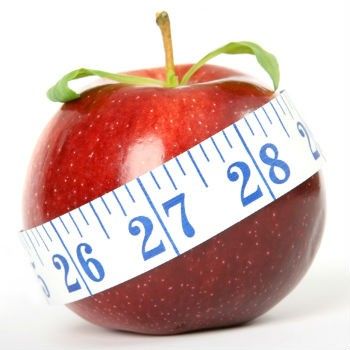Last week the New York City Department of Health and Mental Hygiene released CalCutter, an app designed to help home cooks reduce the number of calories in the meals they prepare. The app is the government’s latest effort to help reduce the city’s obesity rates and encourage people to eat more healthfully. But while its intentions are laudable, we found the app misses out on some great opportunities to instruct users about healthful eating.
What’s the Deal?
CalCutter, available for free on iOS, Android, and the web, is one of several apps (including ABC Eats and NYC Condom) from the NYC Department of Health and Mental Hygiene. The interface is simple: When users open the app for the first time, they see a message that reads “2,000 calories A DAY is all most adults should eat.” Next they have the option of adding a recipe by inputting ingredients, measurements, and the number of servings in the full meal. The app immediately calculates the number of calories per serving. Once users have entered all the ingredients, they can click on “CalCutter” to see suggestions for reducing the meal’s caloric value.
I tested out the app with a few different recipes, including a basic tofu stir-fry and Martha Stewart’s chocolate chip cookies. When it came to the stir-fry (430 calories per serving), the app suggested I use less oil, rice, and tofu. As for the cookies (140 calories each), it recommended subbing egg whites for whole eggs, thereby cutting 10 calories from each cookie.
The ability to calculate the number of calories in a recipe or meal isn’t unique to CalCutter. Weight management apps such as MyFitnessPal and LoseIt! do the same thing. CalCutter is unique in that it’s one of the only apps on the market to go a step further by providing concrete suggestions for how to cut calories from a meal. But that’s also where the app falls short of its potential.
For sure, using smaller amounts of each ingredient is an easy way to cut calories and sometimes to prepare a more healthful meal (for example, cooks can reduce the amount of sugar or sodium in a recipe). But none of the tips I received went beyond the simple premise of eating fewer calories.
There are tons of unexpected ingredient substitutions the app could have mentioned when I entered the chocolate chip recipe — think applesauce for butter or coconut flour for all-purpose. I assume the app didn’t mention these because they wouldn’t have resulted in a significant decrease in calories (and because that probably would have required a more complex design). It’s unfortunate that the app promotes the idea that healthy eating is all about numbers. Based on that theory, a Coke Zero is more nutritious than a stalk of broccoli.
Why It Matters
Should CalCutter’s creators decide to revamp the app, there are a number of opportunities for improvement. For one thing, the app should take into account characteristics of each user such as age, gender, activity level, and personal health goals. Certainly, many people need to consume more or fewer than 2,000 calories a day depending on their individual lifestyles and needs.
It would also be useful to see more varied suggestions for adding nutrients to meals, instead of focusing on somewhat arbitrary reductions. For example, the app might guide users in choosing organic ingredients in accordance with the Dirty Dozen rankings or making simple swaps (whole grains instead of refined ones, brown rice instead of white, etc.) to incorporate extra nutrients into a meal. The Department of Mental Health and Hygiene worked with cookbook author Rocco DiSpirito to create the app, so presumably it should be feasible to come up with more creative tips for healthful eating.
Overall, CalCutter is a step in the right direction when it comes to helping users develop healthy habits. By making people more aware of exactly what they’re putting into their bodies, it can encourage more informed eating practices. But the app also does users a disservice by suggesting that healthy eating is all about numbers, or that healthy cooking can’t be a more creative process. We’ll be on the lookout for CalCutter 2.0 to see if it’s any more comprehensive than the current version.
Got something to say? Share your thoughts in the comments below or tweet the author at @ShanaDLebowitz.

